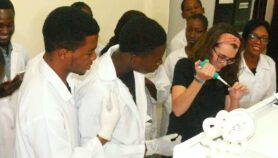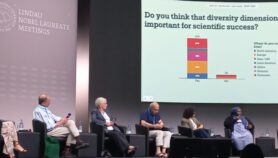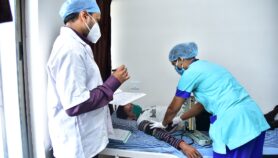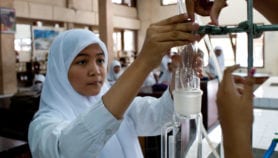By: Katie Mantell
Send to a friend
The details you provide on this page will not be used to send unsolicited email, and will not be sold to a 3rd party. See privacy policy.
Many developing countries are becoming increasingly active in the global scientific community, according to the latest edition of the US report Science and Engineering Indicators.
The growth of scientific activity in parts of Latin America has been particularly impressive. But the overall picture is very uneven, with statistics revealing a fall of 20 per cent in scientific output in sub-Saharan Africa.
The report, published this week by the US National Science Board, shows a rise in the number of scientific degrees taken in Asia, and ranks China as the world’s fifth-leading producer of science and engineering doctorates.
It also reveals that international scientific collaborations have increased worldwide, and shows that, outside Europe, spending on research and development (R&D) has intensified considerably since the early 1990s.
Several Asian countries, most notably South Korea and China, have been “particularly aggressive” in expanding their support for R&D and scientific development. And Latin American and Pacific countries have also attempted to boost R&D investment substantially in recent years.
But science spending as a proportion of economic output in developing countries still lags behind that of the developed world. For example, all Latin American countries — except for Costa Rica — spend less than 1 per cent of their gross domestic product (GDP) on R&D, compared to more than 2.5 per cent in the United States.
Overall, the number of scientific papers published by Latin American scientists (see Table) more than doubled between 1986 and 1999 — the largest increase in publications seen in any region of the world in this period. But nearly all of this output was concentrated in three countries — Argentina, Brazil and Mexico — which generated nearly 80 per cent of the region’s articles in 1999.
Another region with improved performance was Asia, where research output nearly doubled. But there are large variations within the region. China’s output, for example, grew threefold, while the number of research papers published by Indian scientists fell 7 per cent.
In North Africa and the Middle East, the output of research papers grew by 20 per cent, and Algeria, Morocco, Tunisia, Jordan and Syria more than doubled their output, albeit from a very low starting level.
A worrying statistic reveals that sub-Saharan Africa is falling behind in the science research stakes. Output here fell by 20 per cent, reducing the region’s share to less than 1 per cent of world output (see also Poor pay threatens African science).
© SciDev.Net 2002
More on Capacity building
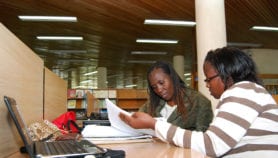
Script media release
Journalists offered ‘big break’ mentoring opportunity from Radio Nigeria
03/04/19






